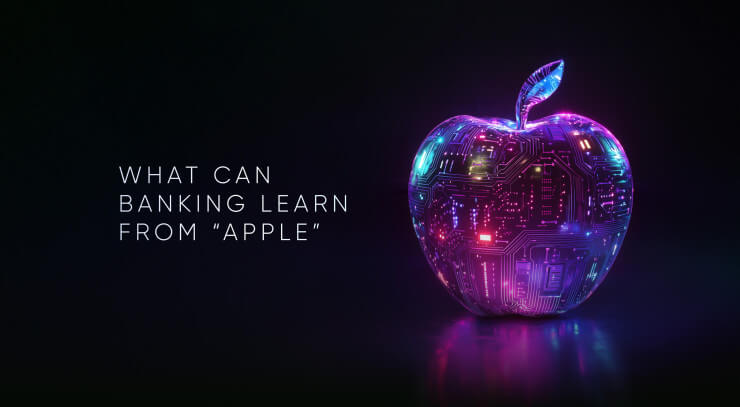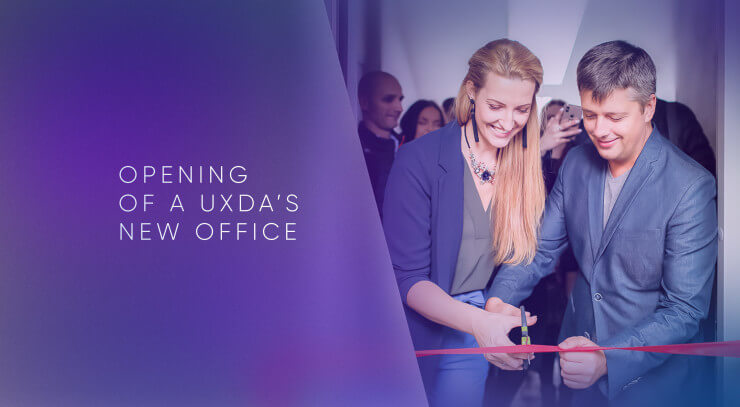In the high-stakes world of digital products, many banks and financial organizations face a fundamental yet often overlooked challenge: a dysfunctional team dynamic that hinders both innovation and progress. The most common solutions—team-building exercises, new management frameworks or injecting more resources—may seem logical. However, these approaches merely address surface-level symptoms rather than the core issue: toxic behaviors that undermine user-centered design, ultimately derailing financial product success.
Often, financial companies try to add extra horsepower to their digital "car" through innovative initiatives without ever examining the team of "mechanics" working on it. According to a Gallup's 2024 State of the Global Workplace report, 77% of employees worldwide feel disengaged at work, a stark statistic that signals deep-seated issues in team dynamics.
In any financial company, the low-demanded and poorly-performing digital product problem is often compounded by a singular focus on cutting-edge technology and innovative features, overshadowing the detrimental impact of toxic mindset and behaviors among teams. Even the most advanced technology will falter if the team behind it is mired in counterproductive habits.
The Real Barrier to Innovation? Toxic Behaviors
From the UXDA team's decade-long experience of designing over 150 complex financial services in 39 countries, we have uncovered the most challenging obstacle to creating successful digital products. It isn’t a lack of innovation or resources but the toxic behaviors that can fester within the product team. By recognizing and changing these behaviors, financial institutions of any size can unleash their true potential—building digital products that genuinely connect with users and stand out their brand in a crowded market.
Any digital financial product starts with a team, not technology. Let's uncover ten toxic behaviors that may be lurking within the digital product team, along with strategies to recognize and address them head-on:
1. The Silo Mentality
It happens when teams operate in isolation—designers, developers, marketers and product managers each staying in their own lane, even fighting with one another over budgets and/or power. The result is a fragmented user experience, a customer journey full of friction and misaligned team priorities.
Why It’s Toxic:
A lack of cross-functional collaboration prevents the product from feeling cohesive. Users end up with an inconsistent experience, and opportunities for synergy and innovation across departments are missed.
How to Fix It:
- Cross-Functional Meetings: Schedule regular meetings that bring together key stakeholders from different departments.
- Shared KPIs: Align teams around the company’s strategy and shared goals, such as user satisfaction scores or conversion rates, to ensure everyone moves in the same direction.
- Open Communication Channels: Use collaboration tools and encourage teams to share progress, insights and challenges openly.
2. Ego-Driven Decision Making
This could become quite toxic for the product, if decisions come from a place of personal preference or hierarchical power plays, rather than user needs or data insights.
Why It’s Toxic:
When egos overshadow customer-centered thinking, the product drifts away from what truly matters to users. This approach ignores the feelings of users and undermines their loyalty and trust in the brand.
How to Fix It:
- User Research as the North Star: Collect data through interviews, usability tests and surveys to inform product decisions.
- Personas and Journey Maps: Create clear user personas and detailed journey maps to engender empathy in customers and keep the focus on real user experiences.
- Ego-Free Culture: Encourage team members to solicit feedback, remain open to critiques and advocate for user-centric discussions.
3. Fear of Failure
Toxic and tyrannical managers cause teams to avoid experimentation and bold ideas, fearing that any mistake could lead to punishment or blame.
Why It’s Toxic:
Fear inhibits innovation. If team members don’t feel safe trying out new concepts, the digital product may stagnate. Overly cautious approaches can lead to missed opportunities and outdated offerings.
How to Fix It:
- Fail-Fast Culture: Normalize small, controlled experiments in a "sandbox." Every failure should offer actionable insights.
- Psychological Safety: Create an environment in which team members feel supported when they take calculated risks.
- Celebrate Learning: Initiate, recognize and reward experiments—even if they don’t succeed—to reinforce a growth mindset.
4. Micromanagement
Managers closely monitor every task and detail, undermining the autonomy of team members.
Why It’s Toxic:
Overbearing supervision kills creativity, hampers morale and slows down progress. As a result, team members feel stifled and disengaged.
How to Fix It:
- Trust and Delegation: Assign clear objectives and allow individuals to decide how to reach them.
- Clear Communication of Goals: Define success metrics so the team understands what’s expected without the need for constant supervision.
- Support, Don’t Control: Shift from micromanagement to coaching and mentorship. Offer guidance and resources and then step back.
5. Lack of Empathy
Designers, developers and product managers make UX and product design decisions in a vacuum, failing to consider the user’s daily realities, emotional triggers or accessibility needs.
Why It’s Toxic:
A product designed without empathy risks being tone-deaf and out of touch with what users truly expect or need.
How to Fix It:
- Usability Testing and Interviews: Perform usability tests to grasp their challenges and context.
- Empathy Mapping: Visualize a user’s journey, motivations and pain points.
- Frequent Feedback Loops: Check in early and often with the actual users to ensure you’re building solutions that resonate with your base.
6. Resistance to Change
Clinging to established processes and tools even when they’re outdated or less efficient.
Why It’s Toxic:
The digital landscape evolves at breakneck speed. A reluctance to adopt new best practices leaves your brand lagging behind competitors.
How to Fix It:
- Culture of Continuous Learning: Offer regular training, workshops and knowledge-sharing sessions to your teams.
- Pilot Programs: Test new tools or methods in small groups before scaling up, thereby reducing resistance and fear of the unknown.
- Benchmarking: Constantly monitor industry standards and competitor innovations and then adapt accordingly.
7. Ineffective Communication
Information gets lost in email threads, siloed chats or poorly organized project documents. Team members only learn about important decisions after the fact.
Why It’s Toxic:
Communication breakdowns lead to errors, duplicate work and stalled progress. Confusion and frustration spike when key details aren’t shared.
How to Fix It:
- Structured Updates: Implement daily or weekly stand-ups to keep everyone in the loop.
- Centralized Documentation: Use digital project management tools so details are consistently tracked and accessible.
- Communication Training: Teach best practices for conveying information and priorities clearly—especially across different time zones and cultures.
8. Lack of Brand Alignment
The team treats financial brand identity as an afterthought rather than an integral guide for decision-making. As a result, a financial product’s design, messaging and overall user experience fail to reflect the company’s core brand strategy, values and identity.
Why It’s Toxic:
Inconsistent or unclear branding confuses users and dilutes authenticity, differentiation and brand equity. When the brand promise isn’t reflected in the product experience, it erodes trust and diminishes user loyalty.
How to Fix It:
- Clear Brand Guidelines: Ensure that everyone involved in digital product development understands and has access to the brand’s positioning, core values, visual identity and tone of voice.
- Early Collaboration with Brand Teams: Involve brand or marketing stakeholders from the start so that product decisions align with the company’s messaging strategy.
- Brand Audits and Checkpoints: Periodically review the product and user experience against established brand strategy and standards, and adapt when the brand evolves or user feedback suggests confusion.
9. Short-Term Focus
Teams concentrate solely on meeting immediate deadlines and quarterly targets, neglecting long-term strategy and vision.
Why It’s Toxic:
A purely short-term view can produce a fragmented product strategy. The team ends up making incremental fixes rather than building a cohesive, future-proof experience.
How to Fix It:
- Balanced Roadmaps: Combine short-term deliverables with strategic milestones that look 6-12 months (or more) into the future.
- Vision Statements: Craft a guiding product vision that everyone can rally around.
- Scenario Planning: Regularly explore “what if” scenarios to anticipate market shifts and prepare accordingly.
10. Ignoring User Feedback
Financial company teams either collect user feedback sporadically or, worse, gather data but fail to act on it.
Why It’s Toxic:
User needs evolve. By dismissing feedback, you risk building irrelevant features or misunderstanding your core audience.
How to Fix It:
- Continuous Feedback Loops: Integrate user feedback mechanisms throughout the product lifecycle—app store review analysis, in-app rates, usability tests, surveys, in-app questionnaires, social media monitoring and focus groups.
- User-Centric KPIs: Track metrics like Net Promoter Score (NPS) or Customer Satisfaction (CSAT) and respond swiftly to dips or issues.
- Actionable Insights: Don’t just collect feedback—translate it into clear tasks and improvements for the product roadmap.
Build a Digitally-Driven Truly Customer-Centric Culture
A McKinsey report found that teams with a strong customer-centricity deliver powerful results: 15-20% increases in sales conversion rates, 20-50% declines in service costs and 10-20% improvement in customer satisfaction. This underscores the critical role of rooting out toxic behaviors and nurturing an environment that prioritizes customer experience above personal or departmental agendas. And human-centered culture also impacts team motivation. If employees are seen as people and not just resources, they are 3.8 times more likely to be high-performing, according to a survey by Gartner.
Tackling these ten toxic behaviors is not a quick fix; it’s a transformative journey. Start by conducting honest assessments of your team’s culture and processes. Solicit feedback anonymously, if needed, and be transparent about the outcomes. From there, you can systematically dismantle silos, promote empathy, embrace risk-taking and champion feedback collection.
In the financial industry—and any sector in which customer trust and innovation intersect—success hinges on more than just feature-rich transactional products. The real differentiator is a cohesive, healthy team that places user needs at the heart of every decision. By identifying and eradicating toxic behaviors, financial companies can capitalize on the full potential of digital experiences, turning ambitious visions into tangible, user-centric realities. It’s time to look beyond superficial remedies and invest in cultivating the kind of team culture that drives sustainable growth, customer satisfaction and digital market leadership.
Discover our clients' next-gen financial products & UX transformations in UXDA's latest showreel:
If you want to create next-gen financial products to receive an exceptional competitive advantage in the digital age, contact us! With the power of financial UX design, we can help you turn your business into a beloved financial brand with a strong emotional connection with your clients, resulting in success, demand, and long-term customer loyalty.
- E-mail us at info@theuxda.com
- Chat with us in Whatsapp
- Send a direct message to UXDA's CEO Alex Kreger on Linkedin


























